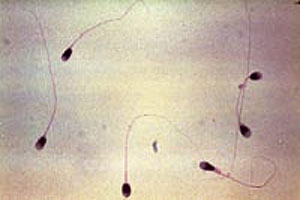Most mammals have two copies of each of their chromosomes-- one from mom and one from dad. At the end of meiosis, each chromosome copy ends up in a different sperm or egg. This is so that when an egg and a sperm combine, the new mammal has the right number of chromosomes.
Mole voles end up with half of their sperm or eggs with one X chromosome and the other half with no X chromosome. There is a 1 in 4 chance that a sperm without an X chromosome will fertilize an egg without an X chromosome. Since mammals need an X chromosome to survive, these fertilized eggs don’t make it to term.
There is also a 1 in 4 chance that a sperm with an X chromosome will fertilize an egg with an X chromosome. In most mammals, this would be OK-- the fertilized egg would go on to become a female.
But this is fatal for mole voles. Most likely this is because these animals have a defective Xist gene. This gene's job is to keep only one X chromosome on in any cell.
Whatever the reason, these mole voles deal fine with the fact that half their fertilized eggs do not make it to term. This means that chromosomal rearrangements and changes that affect fertility can be tolerated. At least in the mole vole.
This is important because one of the key differences between a chimpanzee and a human at the chromosome level is that humans have 46 chromosomes and chimpanzees have 48. Looking at the DNA we see that human chromosome 2 looks just like chimpanzee chromosomes 12 and 13 fused together.
Some people argue that this sort of rearrangement wouldn't be successful because at an early transition stage from 48 to 46 chromosomes, half the fertilized eggs would not make it to term. These fertilized eggs would either be missing or have an extra chromosome. Just like the mole vole.
Here we have a mammalian example where this isn't an issue. This little mole vole is doing quite fine thank you very much. As our ancestors most likely did too.
37.332 -121.903
 Mole voles do fine with one X and no Y
Mole voles do fine with one X and no Y